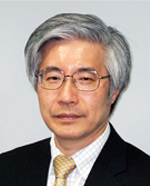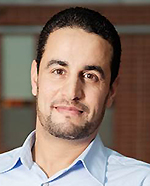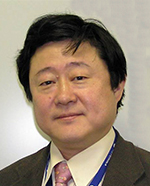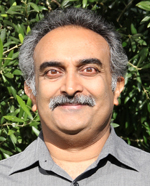Keynote
Wednesday 15, June 2016

The recent advent of hyper-giant content providers and envisaged SDN services are promoting a network paradigm shift. The traffic characteristics of individual users are becoming more diversified. A super-high definition quality ultra-large bandwidth video broadcast experiment is expected in 2016 in Japan. To create nationwide video delivery networks, new transport modes such as optical circuit switching or optical flow switching can be applied in the future. The demand for agility in optical layers will also be needed. Given that traffic increase is over-running the advances in Silicon technology, optical technologies appear to play more and more critical roles. Most optical switching schemes are transparent to the bitrates of the optical signals, which is completely different from electrical switching systems. In addition, the power consumption of optical switching, W/bit, is much smaller than that of electrical systems and hence large bandwidth and low power consumption switching systems will be possible. To develop next generation networks, extension of node throughput is critical, which can be achieved by exploiting optical technologies. The presentation discusses technologies that are expected to play an important role soon, which includes recent advances in the development of ultra large scale optical switches for intra datacenter application and cost-effective large-scale optical transport nodes.
Biography:
Ken-ichi Sato is currently a Professor at the Graduate School of Engineering, Nagoya University, and he is an NTT R&D Fellow. Before joining the university in April 2004, he was an Executive Manager of the Photonic Transport Network Laboratory at NTT. He has been a leading researcher in the field of telecommunications; his most significant achievements lie in two of the very important transport network technology developments. One is ATM (Asynchronous Transfer Mode) network technology, which includes the invention of the Virtual Path concept. The other is photonic network technology, which includes the invention of the optical path concept and various networking and system technologies. He has authored/co-authored more than 400 research publications in international journals and conferences. He holds 40 granted patents and more than 100 pending patents. His contributions to asynchronous transfer mode (ATM) and optical network technology development extend to serving on numerous committees of international conferences including OFC 2014 Technical Chair and OFC 2016 General Chair; authoring a book, Advances in Transport Network Technologies (Artech House, 1996); and coauthoring 14 other books.
Prof. Sato is a Fellow of the Institute of Electronics, Information and Communication Engineers (IEICE) of Japan. He received the Young Engineer Award in 1984, the Excellent Paper Award in 1991, the Achievement Award in 2000, and the Distinguished Achievement and Contributions Award in 2011 from the IEICE of Japan, and the Best Paper Awards in 2007 and 2008 from the IEICE Communications Society. He was also the recipient of the Distinguished Achievement Award of the Ministry of Education, Science and Culture in 2002, and the Medal of Honor with Purple Ribbon from Japan?s Cabinet Office in 2014.

The telecom industry keeps reinventing itself. Soon, the world will be experiencing the 5th generation mobile networks (5G), also referred to as beyond 2020 mobile communication systems. Major obstacles to overcome in 5G systems are principally the highly centralized architecture of mobile networks along with the static provisioning and configuration of network nodes built on dedicated hardware components. This has resulted in lack of elasticity and flexibility in deployment of mobile networks; rendering their run-time management costly, cumbersome and time-consuming. Software Defined Networking, Network Function Virtualization, and Cloud Computing, along with the principles of the latter in terms of service elasticity, on-demand features, and pay-per-use, could be important enablers for various mobile network enhancements, to specifically virtualize and decentralize mobile networks using general-purpose COTS (commercial of the shelf) hardware. For this purpose, different requirements have to be met and numerous associated challenges have to be subsequently tackled. This talk will touch upon the recent trends the mobile telecommunications market is experiencing and discuss the challenges these trends are representing to mobile network operators. To cope with these trends, the talk will then showcase the feasibility of on-demand creation of cloud-based elastic mobile networks, along with their lifecycle management. The talk will introduce a set of technologies and key architectural elements to realize such vision, turning end-to-end mobile networking into software engineering.
Biography:
Prof. Tarik Taleb is an IEEE Communications Society (ComSoc) Distinguished Lecturer and a senior member of IEEE. He is currently a Professor at the School of Electrical Engineering, Aalto University, Finland. He is the EU project coordinator of the EU/JP 5G!Pagoda project, aiming to create an optimal network slice for every service vertical. Prior to his current academic position, he was working as Senior Researcher and 3GPP Standards Expert at NEC Europe Ltd, Heidelberg, Germany. He was then leading the NEC Europe Labs Team working on R&D projects on carrier cloud platforms, an important vision of 5G systems. Before joining NEC and till Mar.2009, he worked as assistant professor at the Graduate School of Information Sciences, Tohoku University, Japan, in a lab fully funded by KDDI. From Oct. 2005 till Mar.2006, he worked as research fellow at the Intelligent Cosmos Research Institute, Sendai, Japan. He received his B.E degree in Information Engineering with distinction, M.Sc. and Ph.D. degrees in Information Sciences from GSIS, Tohoku Univ., in 2001, 2003, and 2005, respectively.
Prof. Taleb's research interests lie in the field of architectural enhancements to mobile core networks (particularly 3GPP's), mobile cloud networking, network function virtualization, software defined networking, mobile multimedia streaming, social media networking, and UAV-based communications. Prof. Taleb has been also directly engaged in the development and standardization of the Evolved Packet System as a member of 3GPP's System Architecture working group. Prof. Taleb is a member of the IEEE Communications Society Standardization Program Development Board. As an attempt to bridge the gap between academia and industry, Prof. Taleb founded the "IEEE Workshop on Telecommunications Standards: from Research to Standards", a successful event that got awarded "best workshop award" by IEEE Communication Society (ComSoC). Based on the success of this workshop, Prof. Taleb has also founded and has been the steering committee chair of the IEEE Conf. on Standards for Communications and Networking.
Wednesday 15, June 2016

47 years has passed from the born of the Internet. Optical network does not contribute only for the progress of the Internet, but also for the progress of the business and economics using the Internet, as "a fat pipe". And also optical network technology progress has been driven by increase of the Internet usage. In 2011, first SDN products (Openflow and its controller) come out and in these 5 years, SDN expanded its application area from packet network to wireless/optical network. SDN enables optical network to change topology, assign wavelength and optimize path/route dynamically. Is that goal? We?d like to (or have to) re-think what we should innovate next using software defined optical network in the next 5 years.
Biography:
In 1981, he joined NEC as an development engineer of LSI for telecommunication systems. He has many experiences in the developing telecom systems (especially SONET and IP router/switch system) and their system LSIs. From 2006 to 2011, he was a general manager of NEC system platform research laboratories and was directing and leading R&Ds of computer and communication system platforms.(for example, starting up SDN/OpenFlow global collaboration project with Stanford university and NICT)
From 2011 to now, he is an executive chief engineer of NEC central research laboratories. From 2016, he is also a professor of Graduate School of Information Science and Technology and assistant general manager of Brain Inspired Computing Collaboration Research Center in Osaka University.
Thursday 16, June 2016

Cars have come a long way since they were first productized in the late 1800’s.
Automation and telemetry have improved tremendously since the first very manual cars.
Now the self-driving car is here, and this is not just an incremental improvement ? this is a game-changing event in the history of cars.
In networking, as we did with cars, we have started adding some automation and some telemetry.
However, this is too little and too slow. We need a bold, long-term vision for the networking industry.
I propose Self-Driving Networks: fully automated, in fact, autonomous, networks that run themselves.
The key is to increase the level of automation, to substantially increase telemetry information, and to bring machine learning techniques to every aspect of network operations.
This approach takes the idea of "SDN as a Compiler" to the next stage, where the "instruction" to the network is at an even higher layer, even more declarative ? similar to simply telling the car where you want to go, and not bother with the details of which lane to drive in, which gear to use, when to brake, to accelerate and to turn.
Biography:
Currently CTO of Juniper Development and Innovation at Juniper Networks, Kireeti was formerly CTO at Contrail Systems, and before that, CTO and Chief Architect of JunOS at Juniper Networks. Dr. Kompella has deep experience in Packet Transport, large-scale MPLS, VPNs, VPLS, and Layer 1 to Layer 3 networking, and has been very active in the IETF, as past chair of the CCAMP Working Group and as author of several Internet Drafts and RFCs across several WGs (including CCAMP, IS-IS, L2VPN, MPLS, NVO3, OSPF, and TE).
Prior to Juniper, Kireeti worked on file systems at NetApp, SGI, and ACSC(acquired by Veritas).
Dr. Kompella received his BS EE and MS CS at IIT, Kanpur, and his PhD in Computer Science at USC, specializing in Number Theory and cryptography.